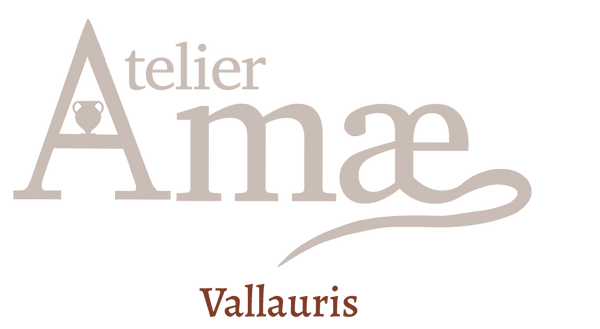Who invented the cauldron?
Share

For this first article I wanted to focus on the Cauldron, being the ceramic centerpiece of our Witch & Cauldron collection and of a more than curious nature it seemed essential to me to dig into the subject 🔮. So here we go, get out the shovels!
In witchcraft, the cauldron represents the womb of the mother goddess, symbol of the creation of life. It uses the 4 elements, it is used to prepare potions, infuse herbs, burn offerings, or as a censer, after adding sand or earth. The cauldron is also used for divination practices. But let's look at its history, how did we come to associate it with the Witch and magic?
The Origin of the Cauldron: Etymology and Archaeological Discoveries
The cauldron, a metal container often used for cooking, dates back to the Bronze Age! (around 2000-1500 BC). The first cauldrons were made of bronze and have been found in Europe and Asia. The word "cauldron" comes from the Latin "caldaria," meaning "boiler" or "kitchen."
A notable example of an ancient cauldron is the Gundestrup cauldron, discovered in Denmark and dating to the first century BCE. Although it resembles a cauldron, this vessel has no handle and would therefore be more accurately considered a basin ( Wikipedia ) .
The Cauldron and Culinary Advancement
The cauldron revolutionized cooking by allowing large quantities of food to be cooked evenly. Being made of metal, such as iron or copper, the heat was better distributed, allowing for more even cooking of food. This process of transforming raw and inedible foods into delicious and nutritious dishes can be seen as a kind of culinary magic. The cauldron thus improved the quality and flavor of meals, contributing to better nutrition and health for populations.

The Cauldron Torture
Caution sensitive souls ... In addition to its culinary use, the cauldron was used as an instrument of torture in Antiquity. In ancient Rome, it was used for torture by filling it with boiling substances such as oil or pitch. This type of punishment was intended to inflict extreme pain and serve as an example.
The Magic Cauldron in "Macbeth"

Now let's get to the most interesting part 🧙♀️.
The image of the cauldron as a magical object has its roots in literature and folklore. In Shakespeare's "Macbeth" (1606), the three witches use a cauldron to prepare their potions, reinforcing the association between cauldron and magic. This representation has had a lasting influence on the popular perception of cauldrons as instruments of witchcraft and mystical transformation.
The Cauldron in Irish Culture
Irish mythology is full of references to the cauldron. One of the most famous examples is the cauldron of Dagda , an important god in the Celtic pantheon. Dagda's cauldron was known for its endless abundance and ability to feed all who came to it, symbolizing generosity and prosperity. Additionally, the cauldron is often associated with leprechauns in Irish folklore, particularly with the idea of a pot of gold hidden at the end of the rainbow. This popular image evokes hidden treasures and magic accessible only to those lucky enough to find them.

Medea and her Cauldron
The story of Medea in Greek mythology adds another dimension to the  Symbolism of the cauldron. Medea, a powerful sorceress, used her cauldron to concoct magical potions. One of the most famous stories is when she kills King Pelias. Medea tricks Pelias' daughters into believing that she can rejuvenate their father by boiling him in a cauldron filled with special potions. They follow her instructions, but instead of rejuvenating, Pelias dies in excruciating pain. This episode reinforces the image of the cauldron as a tool of transformation and fearsome power.
Symbolism of the cauldron. Medea, a powerful sorceress, used her cauldron to concoct magical potions. One of the most famous stories is when she kills King Pelias. Medea tricks Pelias' daughters into believing that she can rejuvenate their father by boiling him in a cauldron filled with special potions. They follow her instructions, but instead of rejuvenating, Pelias dies in excruciating pain. This episode reinforces the image of the cauldron as a tool of transformation and fearsome power.
Medea rejuvenating the ram
Red-figure Hydria (c.-480)
(© British Museum)
The Cauldron, the Witches and Hecate
The cauldron is inseparable from the image of witches and their potions. In mythology, Hecate, the goddess of magic, witchcraft and crossroads, is often depicted with a cauldron. She is an emblematic figure who associates the cauldron with the practice of the occult arts. Witches use the cauldron to prepare magical mixtures, mixing herbs and various substances to create potions and philtres.
The Cauldron and the Four Elements
The cauldron also symbolizes the four elements: fire, water, earth and  air. Fire is needed to heat the cauldron, water is the basic element in which the ingredients are boiled, herbs and other substances come from the earth, and the steam that escapes from the cauldron represents air. This symbolism of the elements reinforces the idea that the cauldron is a microcosm where alchemical and magical transformations take place.
air. Fire is needed to heat the cauldron, water is the basic element in which the ingredients are boiled, herbs and other substances come from the earth, and the steam that escapes from the cauldron represents air. This symbolism of the elements reinforces the idea that the cauldron is a microcosm where alchemical and magical transformations take place.
John William Waterhouse - Magic Circle
From a utilitarian vessel to an instrument of torture, and finally to a magical object in the collective imagination, the cauldron has played a crucial role in the cultural and culinary evolution of humanity. Its rich history, illustrated by archaeological discoveries and literary references, continues to fascinate and feed our imagination. The cauldron, present in the myths of Medea and Hecate, as well as in witches' rituals, remains a powerful symbol of transformation and mystery.
Article written by Lucile Fillon
